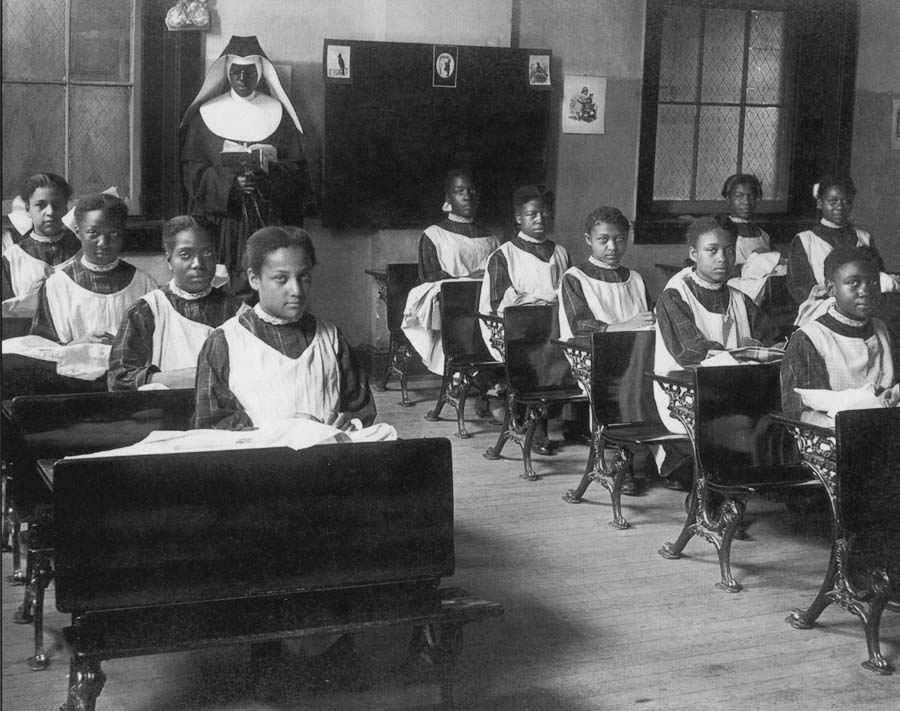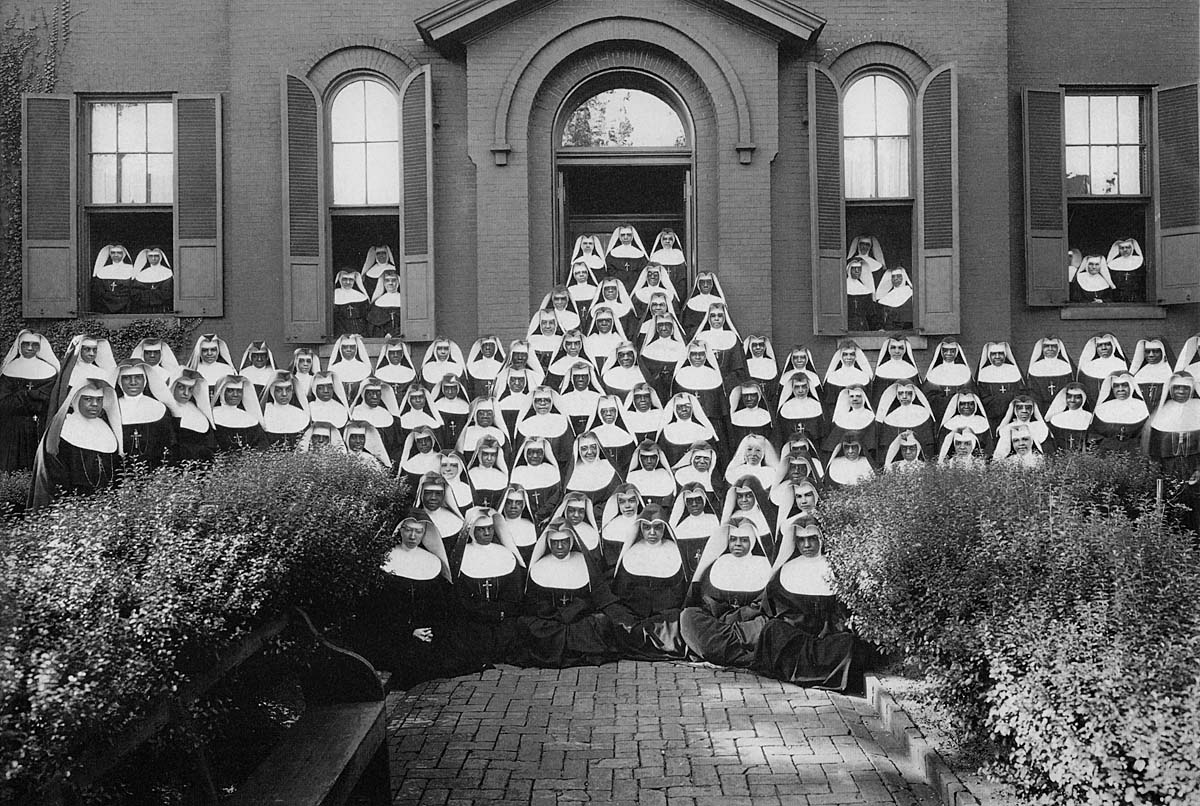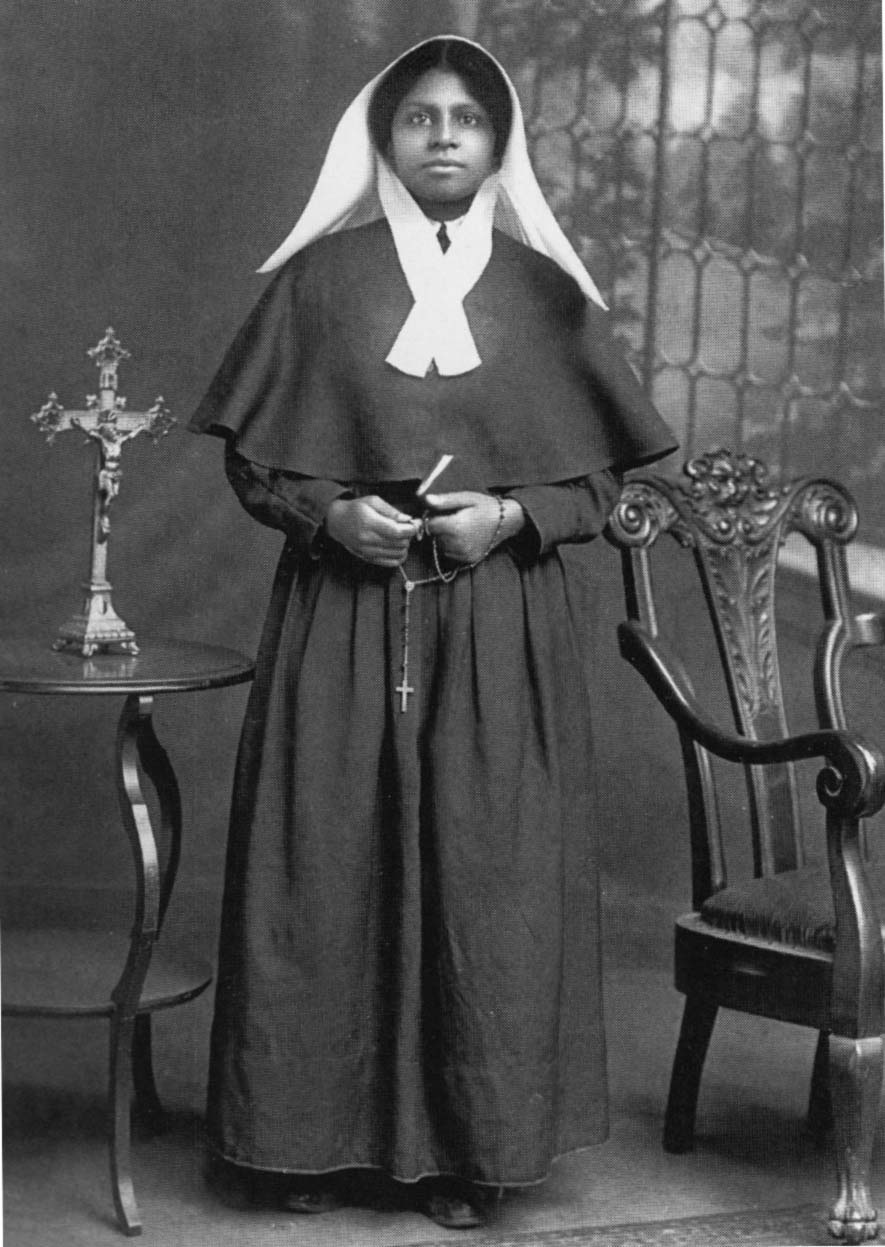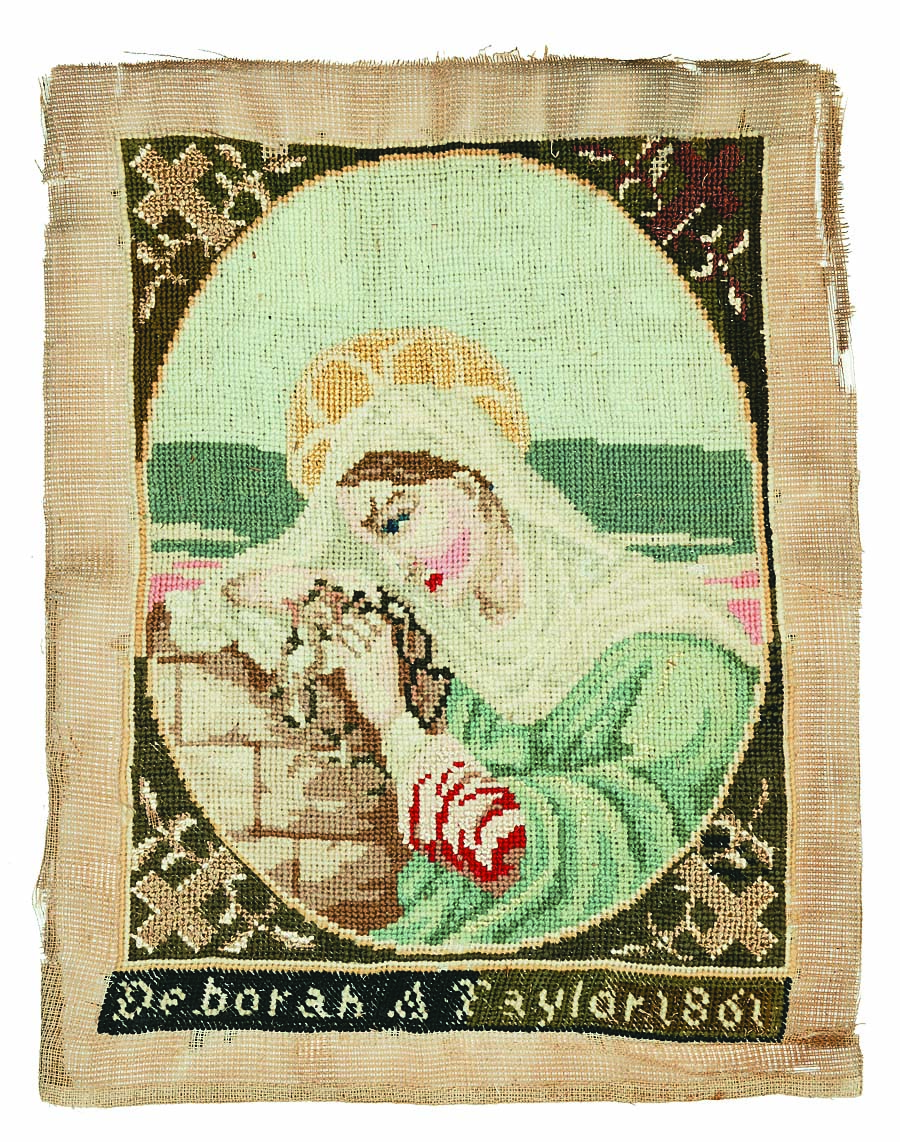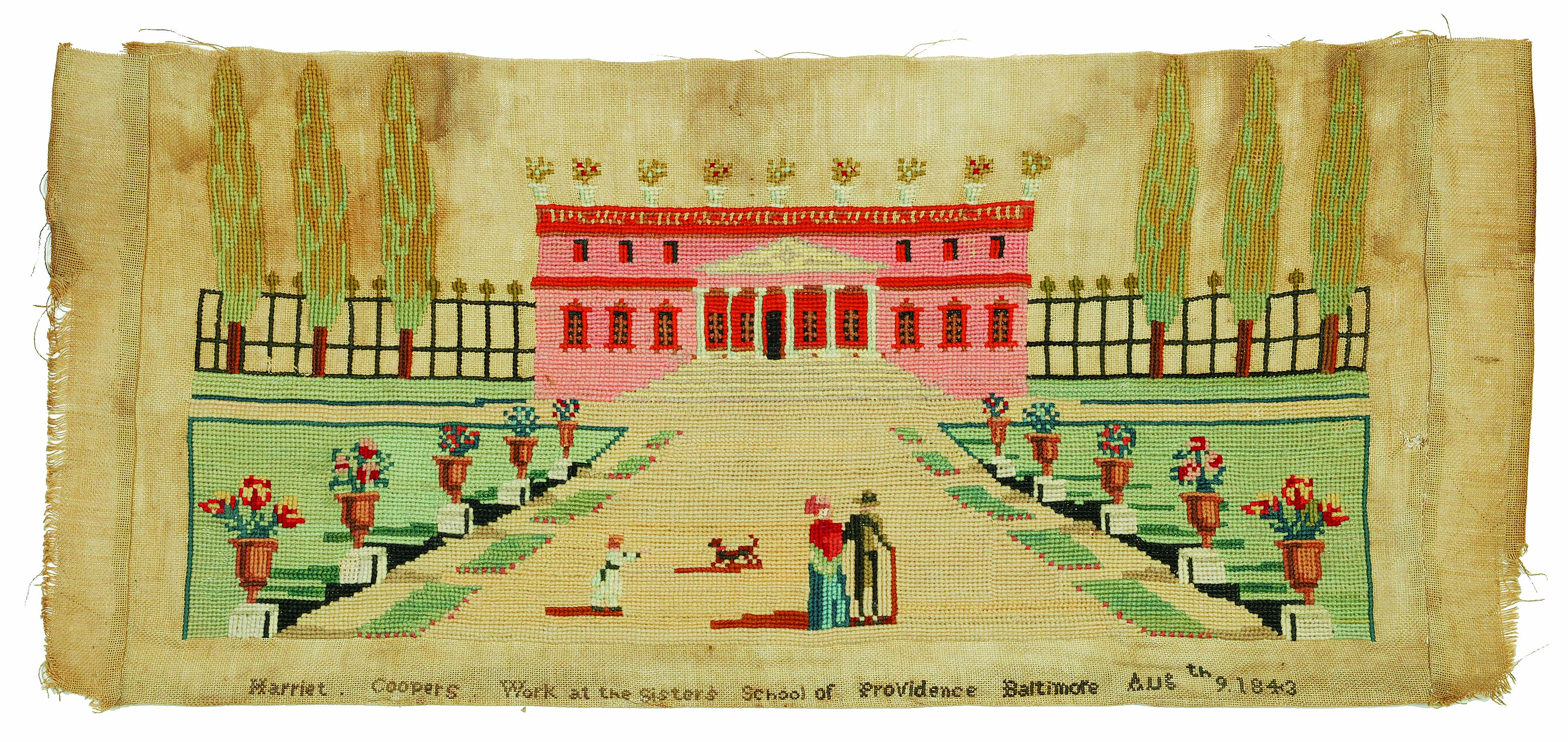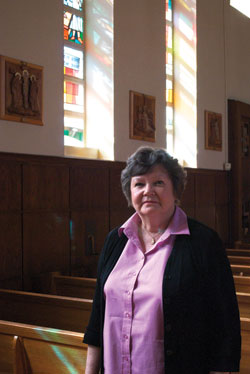 Most members of the UMBC community who drive between the university’s main campus and its south campus don’t know that they’re passing a bit of Baltimore’s cultural and religious history along the way. Tucked on a hill near south campus is the motherhouse of the Oblate Sisters of Providence – a Catholic religious community founded in the United States by women of African descent.
Most members of the UMBC community who drive between the university’s main campus and its south campus don’t know that they’re passing a bit of Baltimore’s cultural and religious history along the way. Tucked on a hill near south campus is the motherhouse of the Oblate Sisters of Providence – a Catholic religious community founded in the United States by women of African descent.
During her studies at UMBC, Sharon Knecht ’99 and ’03 M.A., history, became involved in helping the Oblates tell their uniquely American story. In the following essay, Knecht shares her experience as an archivist with the order:
Members of the Oblate Sisters of Providence (OSP) have lived in the Baltimore suburbs surrounding UMBC since the 1930s, decades before the university itself arrived on the scene. As a longtime resident, I knew that this order of women religious of African descent existed here. I would see them from time to time— in the local shops or in the post office—and wonder about them.
Eight years ago, however, I was led, through God’s providence, to become part of the OSP’s extended family. The master of arts degree in historical studies at UMBC requires students to complete two internships. Among the possibilities offered to me for an internship was working in the archives of the Oblate Sisters of Providence—and the chance to satisfy my curiosity about these nuns.
I called the order’s archivist, Sr. Reginald Gerdes, OSP, and applied for the post. Her acceptance of my application in 2002 commenced an amazing journey which continues to this day.
The order of the Oblate Sisters of Providence is the oldest order of women religious of African descent in the world. Father James Joubert, a French-born Sulpician priest, and Mother Mary Lange, a West Indies immigrant, created the new group in 1829 in Baltimore with a mandate to teach and care for African-American children. The Oblates opened their first school, St. Frances Academy, in 1828, and it is the oldest continuously operating black Catholic school in the United States.
From this humble beginning, the Oblate Sisters of Providence grew into a community of over 350 sisters who served in the order’s missions in eighteen states, several Caribbean countries and Nigeria. Over the past 180 years the order’s members have served their communities by creating and maintaining schools and orphanages and providing other social services. The archives of the order are located at the Oblate Sisters’ motherhouse, which is adjacent to UMBC’s South Campus. It is a repository for a variety of invaluable historical materials about the Roman Catholic Church in the United States: organizational records, Catholic African-American periodicals and newspapers and over 600 rare books dating from the late 1600s to the 1840s. The collection also includes a variety of materials detailing the Oblates’ activities in their missions throughout the United States, Central America and Cuba. These manuscripts have been useful to a variety of academic, religious and local history scholars, as well as genealogists and students.
Taken together, the collection is an amazing treasure trove. But two elements of it grabbed my attention from my first days working in the archives. The first is an extensive collection of 19th and 20th century photographs that document the lives and labor of African-Americans. The second is an impressive collection of eight 19th century needlework samplers created by African American schoolgirls.
The conservation and preservation of both collections became my highest priority. In 2003, I began writing grant proposals to the National Publications and Records Commission to request funding to create an electronic finding aid and a searchable database of archival images. I also pursued and won permission from the Oblate Council to assemble a book to tell the order’s story using photographs from the collection. With preliminary funding from actor Bill Cosby and his wife, Camille, I selected 250 images and secured a publisher for Oblate Sisters of Providence: A Pictorial History, which was published in 2007 and is close to selling out its second printing.
Saving the eight schoolgirl samplers for future generations was also a priority. Through generous donations from needlework guild and private donors, all the samplers are stabilized, encased in archival cartons, and stored in climate-and-humidity-controlled conditions.
My relationship with the Oblates has continued long past my internship, and has blossomed into a career and a vocation. My work at the motherhouse includes helping the Oblate sisters with their computers and marketing items on the community’s website.
Over the years, the number of sisters in the order has dwindled to 75 women. But though their numbers are diminished, the members of the Oblate community’s faith, and strength, and determination to do the will of God have not faltered.
When the recent financial crisis interrupted construction of a new addition on the motherhouse property to house the elderly and infirm sisters, the Oblates moved forward and found new and different ways to support their needs and serve their community.
If the history contained in the archives where I work every day tells us anything, it is that struggles and challenges are not new to the Oblates. That same history also reveals that hard work and a belief in God’s providence can see the order through this crisis as it has so many times before in the Oblates’ 180 years of caring and service.
Tags: Summer 2010

